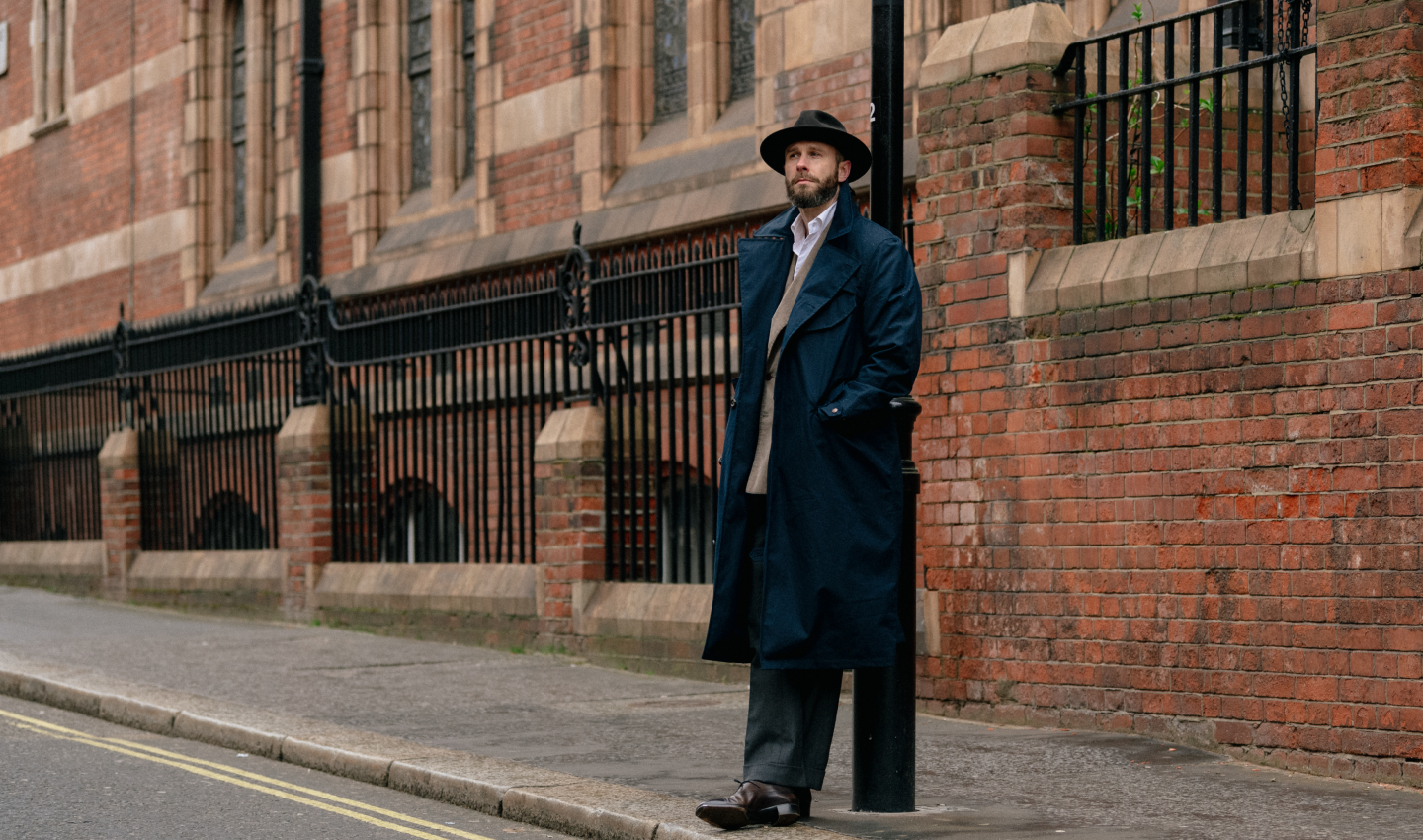Imagine a material so versatile it will keep you dry in Maine and cool in Mumbai. So adaptable it can be used in explosives or the exhaust muffler in your car; it can be turned to everything from bookbinding to bandages to bedding. In an age of synthetic fabrics, of Gore-Tex, Lycra, Kevlar, this super substance is cotton – the natural fibre grown and used by humans for centuries.
VENTILE® COTTON REPELLING WATER
“Cotton is the foundation of many of the products we make and perhaps we take it for granted.”
LANCE MITCHELL OF MITCHELL INTERFLEX
Imagine a material so versatile it will keep you dry in Maine and cool in Mumbai. So adaptable it can be used in explosives or the exhaust muffler in your car; it can be turned to everything from bookbinding to bandages to bedding. In an age of synthetic fabrics, of Gore-Tex, Lycra, Kevlar, this super substance is cotton – the natural fibre grown and used by humans for centuries.
VENTILE® COTTON REPELLING WATER
“Cotton is the foundation of many of the products we make and perhaps we take it for granted.”
LANCE MITCHELL OF MITCHELL INTERFLEX
Over that time, the one place that has, arguably, exhibited the most complete mastery of this material has been Manchester. Cotton is a thread that runs through the history of the city, thanks to a unique conjunction of entrepreneurship, innovation, empire and, at times, some fairly lax labour laws. Dubbed ‘Cottonopolis’, the city dominated the world trade. From importing 1,000 tonnes in 1751, at the industries height in 1912, some eight billion yards of cotton were being produced. Competition, two global conflicts and perhaps a little complacency meant the industry in Manchester, and more widely in Lancashire and Yorkshire, slid into decline.
The problem is this becomes the defining narrative. A cliché reinforced by sepia images of chimneys and flat caps. The truth is different. Not only does cotton production and garment making still exist in the area, albeit on a smaller scale, but it thrives – which naturally brings us to Private White V.C. Not only are they the only garment factory still at work in central Manchester, they are still housed in the last working building from the industry’s heyday.
THE FACTORY, 1853 - PRESENT DAY
THE FACTORY FLOOR
Aligning this legacy with a spirit of innovation, Private White V.C. offers a comprehensive masterclass in the variety of ways in which cotton can be used. A glance at the current collection reveals their depth of knowledge. For instance, the new Duster Mac uses a waterproof, rubberised cotton, more commonly known as Mackintosh in honour of the man who pioneered the process. Although linked with Scotland through their founder, their factory was in fact in Manchester. Now closed, it has inevitably been converted into flats.
THE DUSTER MAC
“It’s important that we buy our Mackintosh fabric from nearby... It’s thin cotton stretched over firm rubber, which makes it a little stiff. So it has to be used for a longer garment like our mac. It’s elegant and authentic. My favourite piece in the current collection.”
MIKE STOLL, MANAGING DIRECTOR OF PRIVATE WHITE V.C.
The only company still making Mackintosh’s in Manchester, Private White V.C.’s Duster Mac is evidence of their ability to use this material. Crucially it is sourced locally, as Mike Stoll, MD at Private White V.C., explains: “It’s important that we buy our Mackintosh fabric from nearby. We use a company in Oldham called Fothergills, the last people who make it. It’s thin cotton stretched over firm rubber, which makes it a little stiff. So it has to be used for a longer garment like our mac. It’s elegant and authentic. My favourite piece in the current collection”.
THE TROPICAL RIPLEY SHIRT
The tropical weave cotton in Private White V.C.’s Ripley shirt would, at first glance, appear more simple than the treated, waterproofed cotton. It has, however, been afforded the same attention to detail and desire to use local suppliers. The fabric, which allows air to flow easily through it, was made by Mitchell Interflex, a textile manufacturer housed in an original 18th century mill in the Instagramable countryside of Lancashire. Lance Mitchell, fourth generation co-owner of the company, takes up the story: “Cotton is the foundation of many of the products we make and perhaps we take it for granted. We developed the tropical weave for Private White V.C. based on a sample of fabric they gave to us a couple of years ago.” Mitchell is too modest - he and his team showed exceptional skill to be able recreate this open, breathable cotton from a minute scrap of material taken from an antique jacket.
Over that time, the one place that has, arguably, exhibited the most complete mastery of this material has been Manchester. Cotton is a thread that runs through the history of the city, thanks to a unique conjunction of entrepreneurship, innovation, empire and, at times, some fairly lax labour laws. Dubbed ‘Cottonopolis’, the city dominated the world trade. From importing 1,000 tonnes in 1751, at the industries height in 1912, some eight billion yards of cotton were being produced. Competition, two global conflicts and perhaps a little complacency meant the industry in Manchester, and more widely in Lancashire and Yorkshire, slid into decline.
The problem is this becomes the defining narrative. A cliché reinforced by sepia images of chimneys and flat caps. The truth is different. Not only does cotton production and garment making still exist in the area, albeit on a smaller scale, but it thrives – which naturally brings us to Private White V.C. Not only are they the only garment factory still at work in central Manchester, they are still housed in the last working building from the industry’s heyday.
THE FACTORY, 1853 - PRESENT DAY
THE FACTORY FLOOR
Aligning this legacy with a spirit of innovation, Private White V.C. offers a comprehensive masterclass in the variety of ways in which cotton can be used. A glance at the current collection reveals their depth of knowledge. For instance, the new Duster Mac uses a waterproof, rubberised cotton, more commonly known as Mackintosh in honour of the man who pioneered the process. Although linked with Scotland through their founder, their factory was in fact in Manchester. Now closed, it has inevitably been converted into flats.
“It’s important that we buy our Mackintosh fabric from nearby... It’s thin cotton stretched over firm rubber, which makes it a little stiff. So it has to be used for a longer garment like our mac. It’s elegant and authentic. My favourite piece in the current collection.”
MIKE STOLL, MANAGING DIRECTOR OF PRIVATE WHITE V.C.
The only company still making Mackintosh’s in Manchester, Private White V.C.’s Duster Mac is evidence of their ability to use this material. Crucially it is sourced locally, as Mike Stoll, MD at Private White V.C., explains: “It’s important that we buy our Mackintosh fabric from nearby. We use a company in Oldham called Fothergills, the last people who make it. It’s thin cotton stretched over firm rubber, which makes it a little stiff. So it has to be used for a longer garment like our mac. It’s elegant and authentic. My favourite piece in the current collection”.
The tropical weave cotton in Private White V.C.’s Ripley shirt would, at first glance, appear more simple than the treated, waterproofed cotton. It has, however, been afforded the same attention to detail and desire to use local suppliers. The fabric, which allows air to flow easily through it, was made by Mitchell Interflex, a textile manufacturer housed in an original 18th century mill in the Instagramable countryside of Lancashire. Lance Mitchell, fourth generation co-owner of the company, takes up the story: “Cotton is the foundation of many of the products we make and perhaps we take it for granted. We developed the tropical weave for Private White V.C. based on a sample of fabric they gave to us a couple of years ago.” Mitchell is too modest - he and his team showed exceptional skill to be able recreate this open, breathable cotton from a minute scrap of material taken from an antique jacket.
THE COTTON SAFARI JACKET WITH THE TROPICAL RIPLEY SHIRT
THE SHORT SLEEVE T-SHIRT
THE COTTON COLLECTION
The variations in cotton used by Private White V.C. seem endless. The sturdy, diagonal-weaved twill in their safari jacket, shirts, shorts and “franglais” blazer; the moleskin in the ever popular bomber jacket, which gets its distinctive raised surface from a process called ‘emerising’. Waxed cotton is used for the twin track jacket, while the Harrington jacket is made from Ventile®, a sophisticated waterproof cotton that combines comfort with impermeability. Last, but by no means least, even the humble t-shirt gets the characteristic Private White V.C. treatment. This is not the disposable garment of the high street. The cotton has been ‘mercerised’ – a process that means it will not loose shape – and then woven into a shirt that fits better and gets softer the longer you wear it.
Ultimately perhaps this simple t-shirt is the best illustration of Private White V.C.’s approach to cotton. Regardless of the garment, there is a recognition that clothes influence how you feel all day and fabric must be tactile. There is a familiarity and confidence with a material that does not even grow in the United Kingdom. It is building on a legacy that was established over centuries in Manchester, the city where cotton is still king.






Leave a comment
This site is protected by hCaptcha and the hCaptcha Privacy Policy and Terms of Service apply.